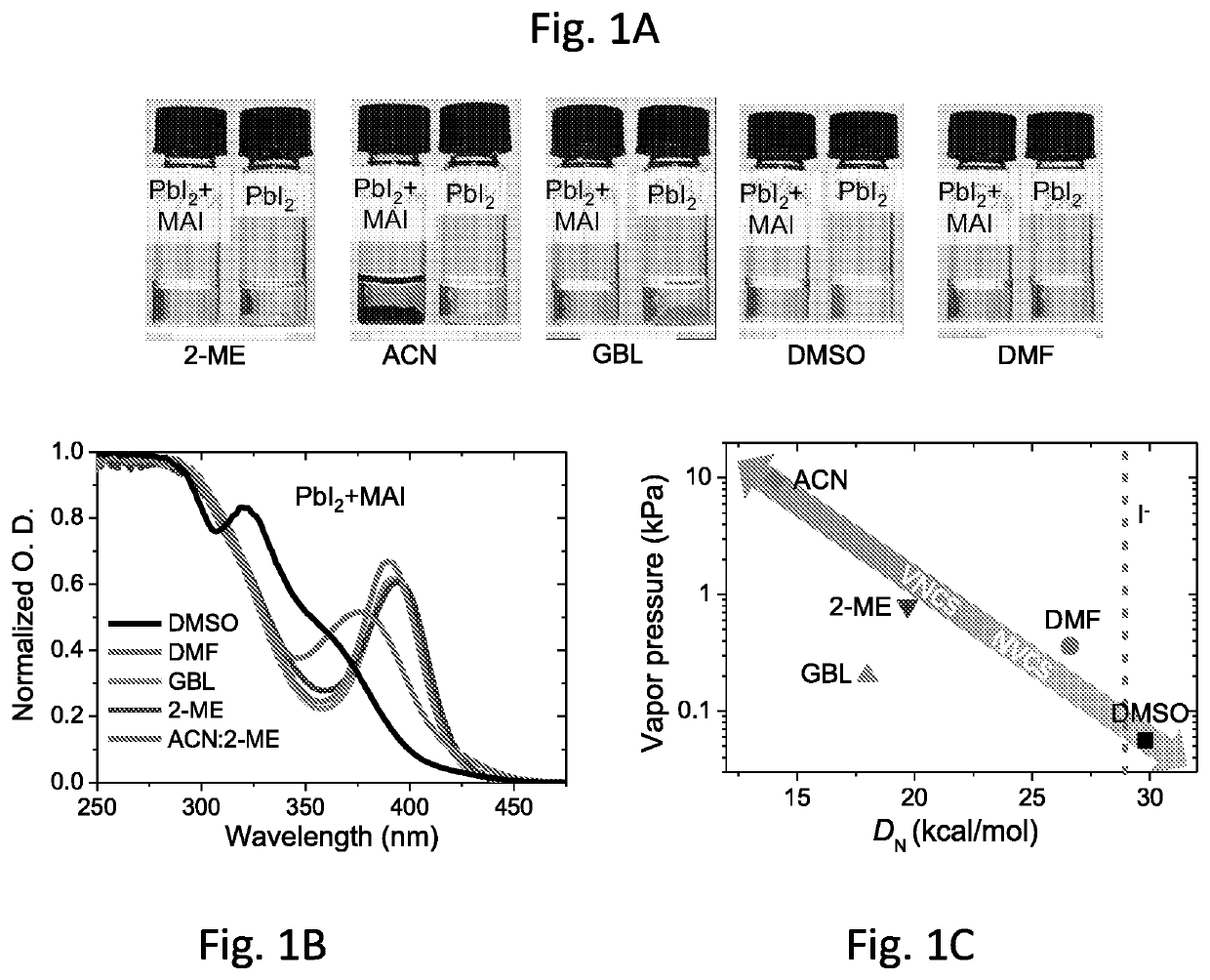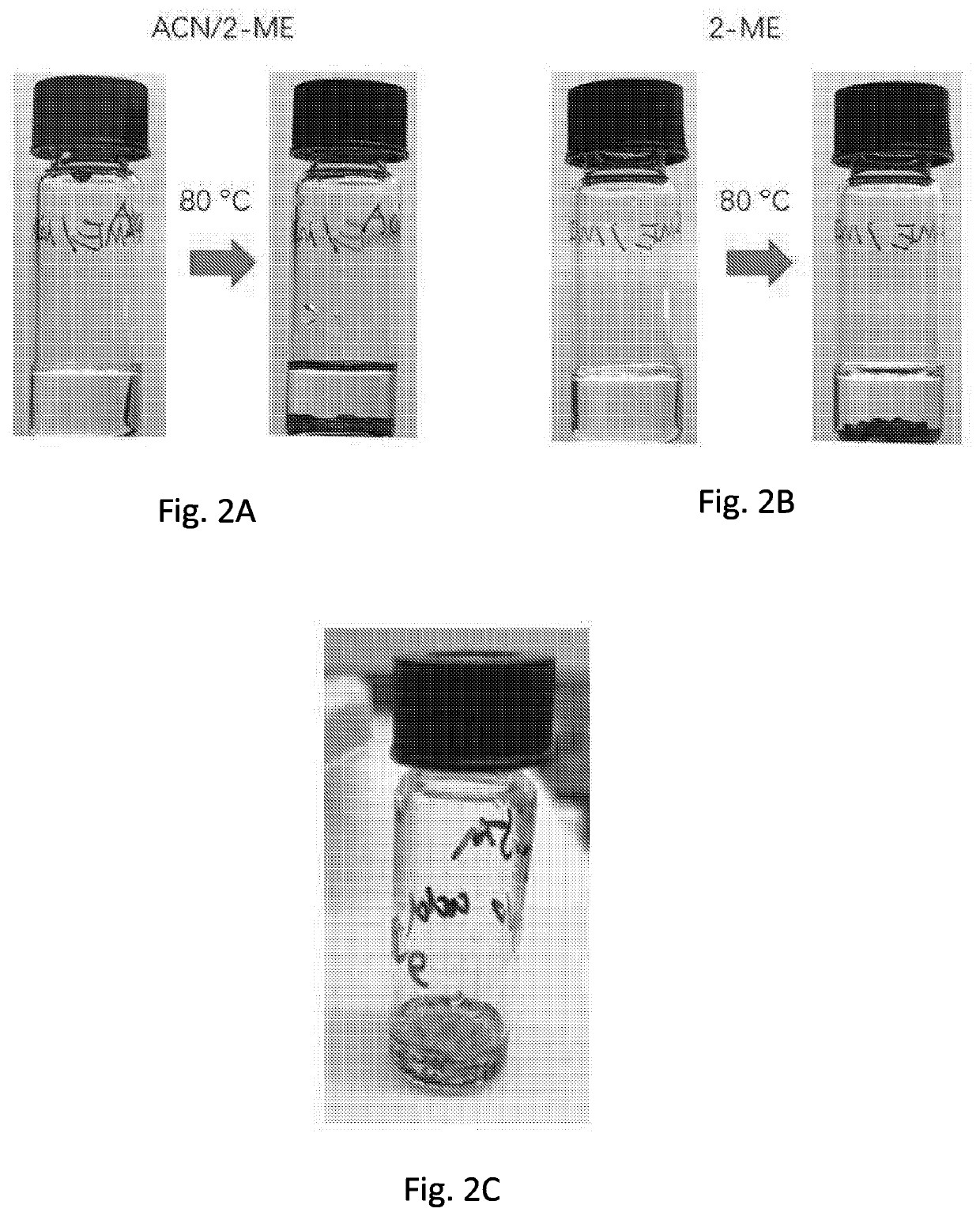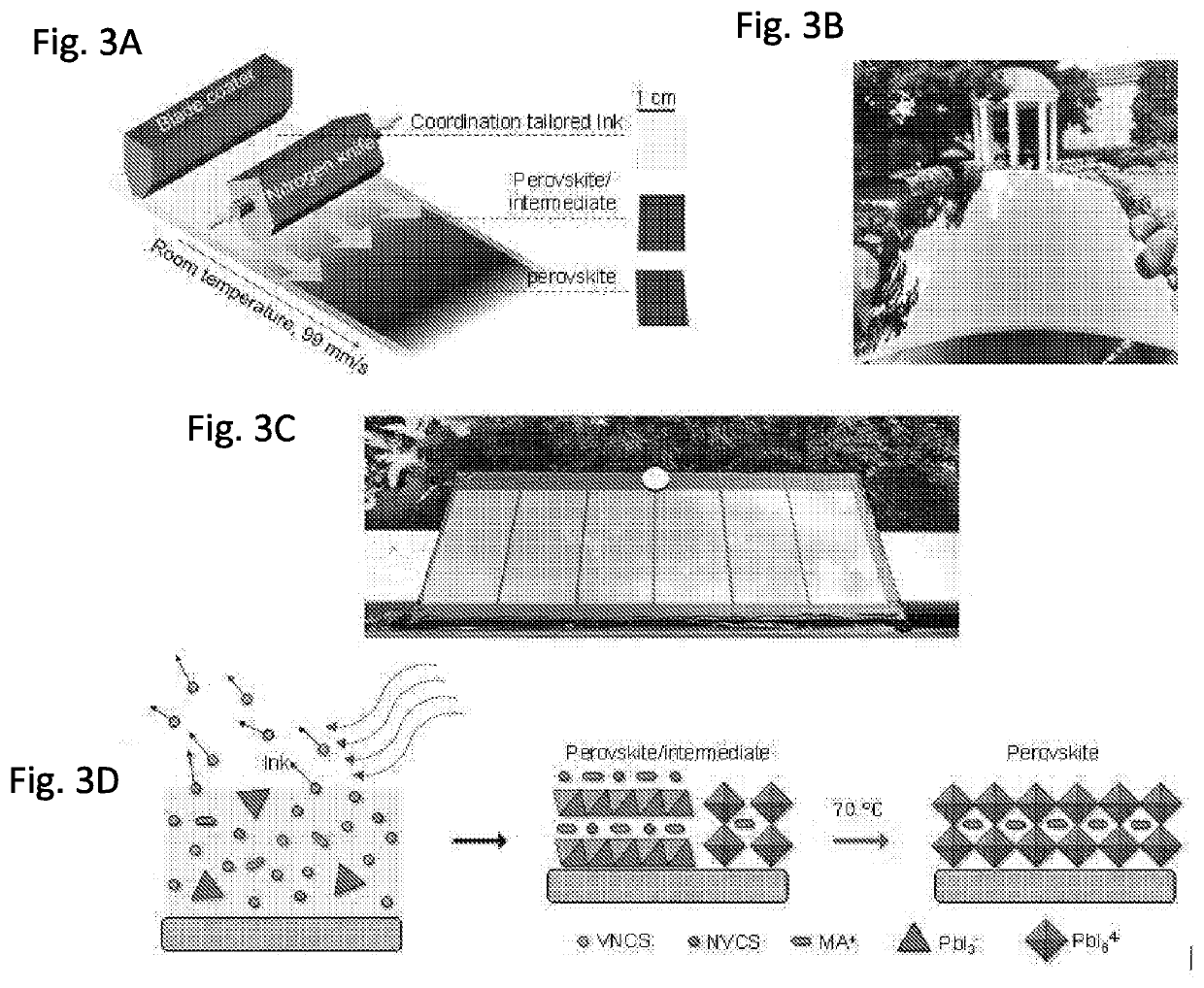Perovskite compositions comprising mixed solvent systems
a technology of mixed solvent and composition, which is applied in the manufacture of final products, electrolytic capacitors, sustainable manufacturing/processing, etc., can solve the problems of reducing the efficiency and stability of perovskite solar cells, high defect density
- Summary
- Abstract
- Description
- Claims
- Application Information
AI Technical Summary
Benefits of technology
Problems solved by technology
Method used
Image
Examples
example 1
Solvent Engineering for Perovskite Ink Solution
[0214]The coordinating ability of dimethyl sulfoxide (DMSO), dimethylformamide (DMF), γ-Butyrolactone (GBL), 2-Methoxyethanol (2-ME), and acetonitrile (ACN) to MAPbI3 was first investigated.10,11 It was discovered that DMSO and DMF could dissolve PbI2 due to their strong coordination to Pb2+ ions,12 while GBL, 2-ME and ACN could not dissolve PbI2 unless MAI was added (FIG. 1A). It is understood that only after MAI dissolved, PbI2 was able to dissolve through I− coordination to Pb2+ ions via the formation of PbI3− complexes, whose characteristic absorption peak at 390 nm was observed for GBL, 2-ME and ACN:2-ME solutions (FIG. 1B).12,13 In contrast, much weaker PbI3− absorption was observed in DMF and DMSO based solutions. Instead of applying only ACN, an ACN:2-ME mixed solvent was used, as it is understood that the solubility of MAPbI3 in ACN is much lower (2+, while GBL, 2-ME and ACN:2-ME have either no or much weaker coordination capab...
example 2
Examination of Solvent Influence on Perovskite Crystallinity using N2 Knife
[0215]The room temperature N2-assisted blade coating of the perovskite films using VNCS, NVCS, or a combination of the two was then investigated (FIG. 3A and FIG. 3D). The films coated with 2-ME or ACN:2-ME (3:2 volume ratio) turned black right after coating, exhibiting the pure perovskite phase, as evidenced by the X-ray diffraction patterns (XRD) in FIG. 4A and FIG. 4C. In contrast, when DMSO or DMF was used as a solvent, the films remained wet and required several tens of minutes to dry at room temperature. These films exhibit strong XRD peaks of the intermediate phase below 10°, as a result of DMSO or DMF's strong coordination to the perovskite precursor ink materials. It should be noted that drying of the GBL based solution was also slow, but the as-dried film only exhibits the pure perovskite phase due to its low coordination ability to GBL, like that of 2-ME and ACN. SEM images of the obtained perovski...
example 3
Blade Coating Speed Investigations
[0217]FIG. 6B summarizes the allowed blade coating speeds to form high quality perovskite films with the N2-knife-assisted blading method using different solvents or solvent mixtures. The N2-knife was operated under pressures below 20 psi. “High quality” refers to films that are uniform and pin-hole free for module fabrication. Pure DMSO as the solvent required a very slow coating speed, below 2 mm / s. The coating speed increased up to 40 mm / s when using 2-ME as the main solvent. With the addition of ACN at a volume ratio of 3:2 for the ACN:2-ME mixed solvent, the coating speed further increased to 99 mm / s, which was the upper limit speed of the blade coater. Using the latter mixed solvent, a perovskite film was blade coated on a flexible glass substrate with an area of ˜225 cm2 at room temperature with a speed of 99 mm / s. For reference, a photographic image of a bladed MAPbI3 film on a flexible Corning glass with an area of 225 cm2 is shown in FIG. ...
PUM
| Property | Measurement | Unit |
|---|---|---|
| vapor pressure | aaaaa | aaaaa |
| grain sizes | aaaaa | aaaaa |
| area | aaaaa | aaaaa |
Abstract
Description
Claims
Application Information
 Login to View More
Login to View More - R&D
- Intellectual Property
- Life Sciences
- Materials
- Tech Scout
- Unparalleled Data Quality
- Higher Quality Content
- 60% Fewer Hallucinations
Browse by: Latest US Patents, China's latest patents, Technical Efficacy Thesaurus, Application Domain, Technology Topic, Popular Technical Reports.
© 2025 PatSnap. All rights reserved.Legal|Privacy policy|Modern Slavery Act Transparency Statement|Sitemap|About US| Contact US: help@patsnap.com



